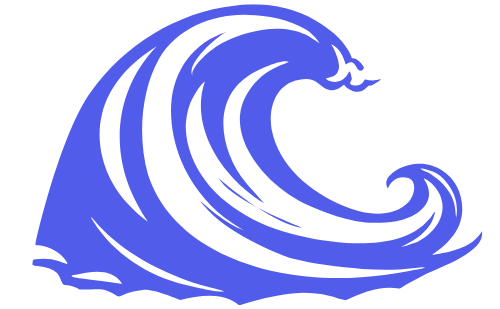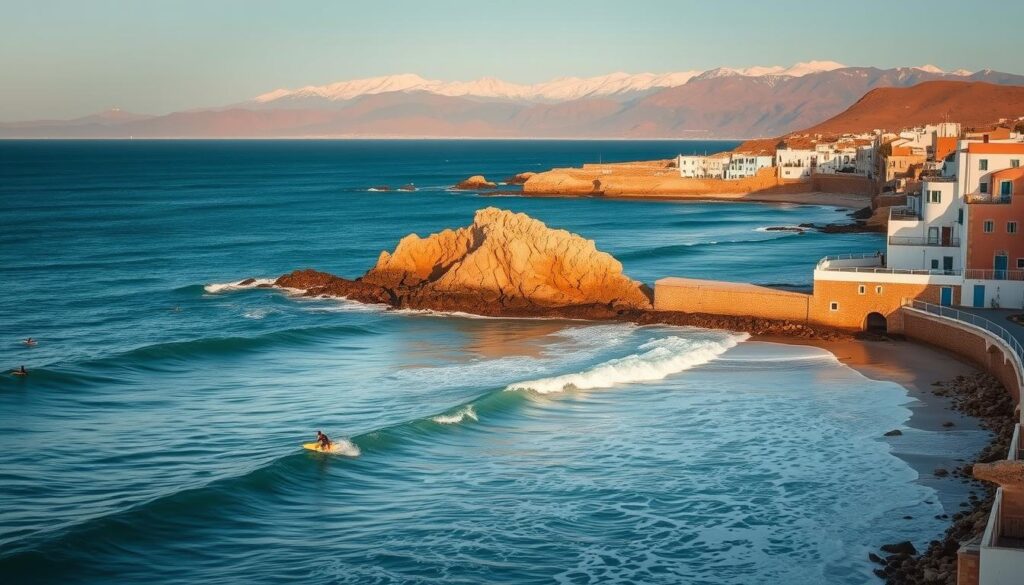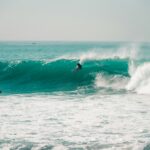When is the Best Time to Surf in Morocco?
Morocco has become a global surf destination, attracting thousands of surfers every year. With its consistent waves and varied surf spots, it’s an ideal location for surfers of all levels.
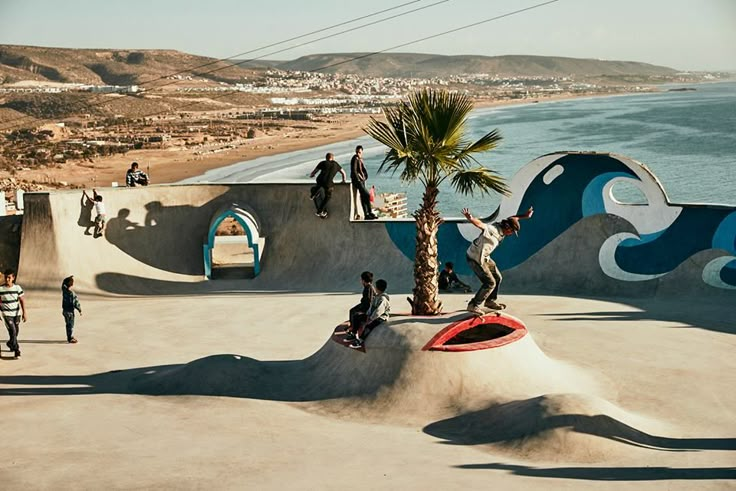
You can experience the thrill of riding the waves in a paradise-like setting. To make the most of your surf trip, understanding the optimal surfing conditions is crucial. The ideal time for surfing depends on several factors, including the season, swell direction, and wind patterns.
Key Takeaways
- Morocco’s surf season peaks during certain months.
- The optimal surfing conditions vary depending on the region.
- Understanding the swell direction and wind patterns is crucial.
- You can book surf lessons and plan your trip accordingly.
- Contact us via WhatsApp (+212663231312) or email (contact@surfinginTaghazout.com) to plan your surf adventure.
Morocco’s Surfing Scene: An Overview
With its unique geography, Morocco’s surf scene is thriving, offering consistent waves year-round. The country’s Atlantic coastline is exposed to swells from the North Atlantic, creating a variety of waves suitable for surfers of all levels.
Why Morocco Has Become a Global Surf Destination
Morocco has become a hotspot for surfers globally due to its consistent waves and favorable wind patterns. The region around Taghazout and Agadir is particularly popular, with numerous surf camps and schools offering lessons and rentals.
The Atlantic Coastline: Morocco’s Wave Factory
The Atlantic coastline of Morocco is known for its diverse range of surf spots, including world-famous point breaks and secluded beach breaks. Some of the most notable surf spots include:
- Taghazout’s Anchor Point
- Agadir’s Devil’s Rock
- Essaouira’s Sidi Kaouki
Famous Point Breaks and Beach Breaks
Morocco is home to some of the most iconic point breaks and beach breaks in the world. These include:
- Anchor Point in Taghazout, known for its consistent waves
- Devil’s Rock in Agadir, a challenging point break for experienced surfers
- Sidi Kaouki, a secluded beach break near Essaouira
Wave Consistency Throughout the Year
One of the key factors that make Morocco an ideal surf destination is the consistency of its waves throughout the year. The surfing weather in Morocco is characterized by gentle offshore winds and a consistent swell direction, making it suitable for surfers of all levels.
Understanding Morocco’s Surf Seasons
Morocco’s surf seasons are a complex interplay of North Atlantic swells and local wind patterns. Understanding these factors is crucial to determining the top surfing seasons in Morocco and experiencing prime surf conditions in Morocco.
The Year-Round Surf Calendar
The surf calendar in Morocco varies significantly throughout the year, with different seasons offering unique wave conditions. Seasonal swell patterns play a significant role in shaping these conditions.
Seasonal Swell Patterns
During the winter months, Morocco experiences larger swells due to North Atlantic storms, resulting in bigger waves, especially on the Atlantic coast.
Temperature Variations
Temperature variations between seasons also affect surf conditions. Warmer waters during summer months make for comfortable surfing, while colder waters in winter require wetsuits.
How Climate and Geography Shape Wave Conditions
Morocco’s geography, with its extensive Atlantic coastline, exposes it to various wave conditions influenced by North Atlantic swells and local wind patterns.
North Atlantic Influence
The North Atlantic has a significant impact on Morocco’s surf, particularly during the winter when swells are larger and more consistent.
Local Wind Patterns
Local wind patterns also play a crucial role, with offshore winds creating clean and organized wave faces, ideal for surfing.
| Season | Swell Size | Water Temperature |
|---|---|---|
| Winter | Large | Cold |
| Summer | Small to Medium | Warm |
As noted by surf experts, “Morocco’s surf seasons offer a diverse range of conditions for surfers of all levels.” Understanding these conditions can enhance your surfing experience.
The Best Time to Surf in Morocco: Season by Season
The best time to surf in Morocco depends on your skill level and preferences, as the country’s coastline offers diverse wave conditions throughout the year. Morocco’s extensive Atlantic coastline is exposed to swells from the North Atlantic, creating a varied surfing experience across different seasons.
Fall (September-November): The Beginning of Swell Season
Fall marks the beginning of the swell season in Morocco, with consistent waves that are ideal for surfers looking to escape the summer crowds. During this period, the wave heights start to increase, providing exciting opportunities for both beginners and experienced surfers.
Wave Heights and Consistency
The fall season brings a noticeable increase in wave heights, with average wave heights ranging from 3 to 6 feet. The consistency of the waves is also higher during this time, making it an excellent period for surfers to improve their skills.
Crowd Levels and Water Temperature
As the summer vacation season ends, the crowds dissipate, making it a more relaxed time to surf. The water temperature remains relatively warm, ranging from 64°F to 68°F (18°C to 20°C), allowing for comfortable surfing conditions without the need for thick wetsuits.
Winter (December-February): Peak Season for Experienced Surfers
Winter is considered the peak season for experienced surfers in Morocco, as the North Atlantic swells reach their maximum strength. This period is characterized by powerful waves, often exceeding 8 feet in height.
Handling Powerful North Atlantic Swells
The North Atlantic swells that hit Morocco’s coastline during winter are among the most powerful in the world. Experienced surfers can take advantage of these massive waves, but it’s crucial to be aware of the potential dangers and to surf within your limits.
Weather Considerations and Wetsuit Requirements
Winter months bring colder water temperatures, ranging from 58°F to 62°F (14°C to 17°C), necessitating the use of thicker wetsuits. Additionally, surfers should be prepared for cooler air temperatures and potential storms.
Spring (March-May): Consistent Waves and Milder Conditions
Spring in Morocco offers a balance between wave quality and weather comfort. The waves remain consistent, and the air and water temperatures become milder, making it an ideal time for intermediate surfers.
Ideal Conditions for Intermediate Surfers
The spring season provides a great opportunity for intermediate surfers to improve their skills, with waves that are consistent and manageable. The conditions are generally less crowded than in the summer, adding to the appeal.
Balancing Wave Quality and Weather Comfort
As spring progresses, the weather becomes more pleasant, with warmer air temperatures and calmer seas. This balance between wave quality and comfort makes spring an attractive time for surfers who want to enjoy their sport without the harsh conditions of winter.
Summer (June-August): Beginner-Friendly Waves
Summer is the best time for beginners to learn surfing in Morocco. The waves are generally smaller and more manageable, making it an ideal period for those new to the sport.
Smaller Swells and Learning Opportunities
The summer months bring smaller swells, which are perfect for learning the basics of surfing. The calm and clear waters provide a safe environment for beginners to practice and improve their skills.
Dealing with Summer Crowds
While summer is great for beginners, it’s also the peak tourist season, which means that popular surf spots can get crowded. Planning your surfing sessions early in the morning or later in the evening can help you avoid the crowds.
Regional Guide: When to Surf Where in Morocco
Morocco’s diverse coastline offers a range of surf spots, each with its unique characteristics and best surf times. Understanding the regional variations can help you plan your surf trip to Morocco more effectively.
Taghazout and Agadir Region
The Taghazout and Agadir region is renowned for its consistent waves, making it a favorite among surfers. Within this region, specific breaks offer different experiences.
Anchor Point, Hash Point, and Panoramas
Anchor Point is known for its powerful waves, while Hash Point offers a more sheltered experience. Panoramas, with its stunning views, provides a variety of wave types depending on the swell direction.
Best Months for Each Break
The best months for surfing in Taghazout range from September to April, with peak conditions typically occurring during the winter months. Anchor Point and Hash Point are particularly popular during this time due to their consistent waves.
Essaouira and Sidi Kaouki
Essaouira and Sidi Kaouki are celebrated for their windsurfing opportunities, but they also offer great surf conditions. The wind patterns in this region create a unique surfing experience.
Wind Patterns and Wave Consistency
The wind in Essaouira can be quite strong, making it ideal for windsurfers. However, the waves remain consistent, providing good surf conditions, especially during the summer months.
Seasonal Highlights
Summer is the best time to surf in Essaouira, with warm weather and consistent waves.
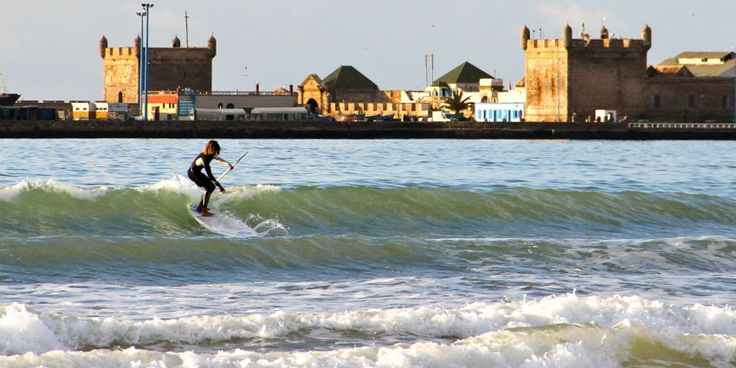
Imsouane Bay and Cathedral Point
Imsouane Bay is famous for its long rides, making it a must-visit for surfers looking to experience Morocco’s best waves.
Morocco’s Longest Rides
Imsouane Bay offers some of Morocco’s longest surfable waves, particularly during the winter months when swells are at their largest.
Optimal Swell Direction and Size
The optimal swell direction for Imsouane is northwest, and the best wave sizes are typically found during the peak winter season.
Northern Coast Spots: Mehdia to Ceuta
The northern coast of Morocco offers less crowded surf spots, providing an alternative for those looking to avoid the more popular areas.
Less Crowded Alternatives
Mehdia and other northern coast spots are ideal for surfers seeking fewer crowds and a more serene surfing experience.
Seasonal Accessibility
The accessibility of these northern spots can vary with the seasons, with some being more suitable during the spring and fall when the swells are milder.
Surf Lessons in Taghazout: Learning from the Pros
Taghazout offers some of the best surf lessons globally, suitable for both beginners and seasoned surfers. Whether you’re looking to catch your first wave or refine your technique, the surf schools in Taghazout have got you covered.
Beginner to Advanced Instruction Options
Surf lessons in Taghazout cater to all skill levels, from those who have never set foot in the water to advanced surfers looking to improve their skills. You can choose between single lessons and week-long packages, depending on your schedule and commitment level.
Single Lessons vs. Week-Long Packages
- Single Lessons: Ideal for those on a tight schedule or looking to try out surfing before committing to a longer course.
- Week-Long Packages: Perfect for those serious about improving their skills. These packages offer a comprehensive learning experience.
Group and Private Instruction
You can opt for group instruction, where you’ll learn alongside other surfers, or private lessons, which offer personalized feedback and instruction.
What to Expect from Surf Lessons
When you sign up for surf lessons, you can expect a structured program that covers the basics of surfing, safety, and technique.
Typical Daily Schedule
A typical day might start with a morning session on the beach, covering theory and preparation, followed by practical sessions in the water.
Equipment and Safety Training
You’ll be provided with all the necessary equipment, and part of the lesson will include safety training to ensure you’re aware of how to surf safely.
Best Time of Year for Surf Lessons
The best time for surf lessons depends on your skill level and what you’re looking for. Generally, the summer months offer warmer waters and smaller waves, ideal for beginners.
Seasonal Recommendations for Different Skill Levels
- Beginners: Summer (June to August) is the best time to start, with warm water and gentle waves.
- Advanced Surfers: Winter (December to February) offers bigger waves and a more challenging surf.
Booking Through SurfinginTaghazout.com
For a seamless booking experience, visit SurfinginTaghazout.com to secure your spot in the surf lessons.
Weather Patterns and Swell Conditions
To catch the perfect wave in Morocco, it’s essential to grasp the country’s weather patterns and swell conditions. Morocco’s coastline along the Atlantic Ocean creates a unique environment where various weather patterns and swell directions come into play.
Understanding Moroccan Swell Directions
Morocco is exposed to different swell directions, which significantly impact the surf conditions. Understanding these directions is crucial for surfers to identify the best spots and times to surf.
North vs. West Swells
North swells typically bring larger waves to the northern coast of Morocco, while west swells affect the entire coastline, creating consistent waves throughout the country. The direction of the swell plays a significant role in determining the surf conditions at different breaks.
How Different Breaks Respond to Swell
Different surf spots in Morocco respond uniquely to various swell directions. For instance, Imsouane Bay is known for its massive waves during north swells, while Taghazout is more consistent with west swells.
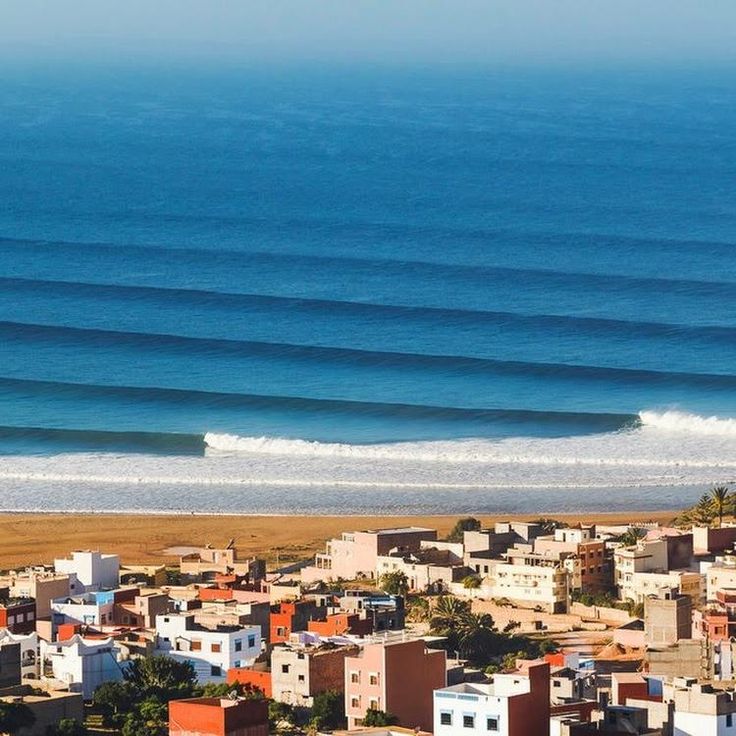
Wind Patterns Throughout the Year
Wind patterns in Morocco vary throughout the year, significantly affecting surf conditions. Understanding these patterns helps surfers plan their sessions.
Morning Offshores and Afternoon Onshores
In Morocco, winds are typically offshore in the morning, creating clean and glassy conditions ideal for surfing. As the day progresses, winds often turn onshore, making the surf conditions choppy.
Seasonal Wind Variations
During the winter months, winds tend to be stronger and more northerly, while in the summer, they are generally lighter and more westerly. These seasonal variations impact the surf conditions and should be considered when planning a surf trip.
Reading Surf Forecasts for Morocco
To make the most of your surf trip to Morocco, it’s crucial to understand how to read surf forecasts. Key metrics include swell size, direction, and wind speed.
Key Metrics to Watch
When checking surf forecasts, pay attention to swell size, direction, and period, as well as wind speed and direction. These metrics will help you predict the surf conditions.
Reliable Forecast Resources
Some reliable resources for surf forecasts in Morocco include Surfline, Magicseaweed, and Windguru. These websites provide accurate and up-to-date information to help you plan your surf sessions.
| Forecast Resource | Key Metrics | Reliability |
|---|---|---|
| Surfline | Swell size, direction, wind | High |
| Magicseaweed | Swell size, direction, wind, weather | High |
| Windguru | Wind speed, direction, weather models | High |
By understanding Morocco’s weather patterns, swell conditions, and how to read surf forecasts, you can maximize your surf experience in this beautiful country.
Beyond Surfing: Paradise Valley Day Trips
Escape the surf scene and explore the breathtaking Paradise Valley, a natural oasis in the heart of Morocco. This stunning destination offers a unique opportunity to experience the country’s diverse landscapes and activities beyond surfing.
Exploring Morocco’s Natural Oasis
Paradise Valley is a haven for those seeking adventure and relaxation. The valley boasts crystal-clear swimming holes and natural slides, perfect for a refreshing dip.
Swimming Holes and Natural Slides
The valley’s swimming holes are surrounded by lush vegetation, creating a serene atmosphere. You can slide down the natural rock formations and enjoy the cool waters.
Hiking Opportunities
In addition to swimming, Paradise Valley offers excellent hiking trails with breathtaking views of the surrounding landscape. You can explore the valley’s natural beauty at your own pace.
Best Time to Visit Paradise Valley
The ideal time to visit Paradise Valley depends on the seasonal water levels. Generally, the valley is at its best during the spring and early summer months when the water is calm and clear.
Seasonal Water Levels
The water levels in Paradise Valley vary throughout the year, with the highest levels typically occurring during the winter months. However, this can also make the valley more challenging to access.
Combining with Your Surf Schedule
You can easily combine a day trip to Paradise Valley with your surf schedule. The valley is located near Taghazout, making it an ideal excursion for surfers looking to take a break.
What to Bring and Expect
When visiting Paradise Valley, be sure to bring comfortable hiking shoes, a swimsuit, and plenty of water. You can expect a warm welcome and a chance to experience the natural beauty of Morocco.
Practical Preparation Tips
To make the most of your trip, consider booking through SurfinginTaghazout.com, which offers guided tours and expert knowledge of the area.
Booking Through SurfinginTaghazout.com
By booking through SurfinginTaghazout.com, you can ensure a smooth and enjoyable experience. They provide comprehensive guidance on what to expect and how to prepare for your day trip.
Sunset Sandboarding Adventures in Timlaline
Timlaline’s majestic dunes offer a unique sandboarding adventure, set against the backdrop of a breathtaking Moroccan sunset. As you glide down the sandy slopes, the thrill of sandboarding combines with the serene beauty of the desert landscape.
The Thrill of Desert Surfing
Sandboarding in Timlaline is an exhilarating experience that brings together the excitement of surfing and the tranquility of the desert. The activity allows you to explore the dunes in a fun and adventurous way.
Comparing Ocean and Sand Surfing
While ocean surfing involves riding waves on water, sandboarding is about gliding down sandy dunes. Both activities offer a unique thrill, but sandboarding provides a different kind of challenge and excitement.
Beginner-Friendly Activity
Sandboarding is suitable for all skill levels, including beginners. The gentle slopes of Timlaline’s dunes make it an ideal location for those new to the sport.
Optimal Seasons for Sandboarding
The best time for sandboarding in Timlaline depends on the temperature and weather conditions. Generally, the spring and autumn seasons offer the most favorable conditions.
Temperature Considerations
Mild temperatures during spring (March to May) and autumn (September to November) make these seasons ideal for sandboarding. The heat of summer can be challenging, while winters can be quite cool.
Best Time of Day
The late afternoon and early evening are the best times for sandboarding, as the sun begins to set, casting a golden glow over the dunes.
Combining Surf and Sand Experiences
For those looking for a multi-adventure experience, combining surf and sand activities is a great option. You can book a day trip that includes both surfing and sandboarding.
Multi-Sport Day Trips
Day trips that combine surfing and sandboarding offer a varied and exciting experience. You can enjoy the best of both worlds in one adventure.
Booking Your Sandboarding Adventure
To book your sandboarding adventure in Timlaline, visit SurfinginTaghazout.com. They offer guided tours and equipment rental.
Planning Your Moroccan Surf Trip: Practical Tips
Morocco’s diverse surf regions require thoughtful preparation to ensure a smooth and enjoyable trip. Whether you’re a seasoned surfer or just starting out, understanding the practical aspects of your journey can make all the difference.
Accommodation Options for Surfers
When it comes to accommodation, surfers have a range of options to choose from, including surf camps and independent stays. Surf camps offer a comprehensive experience, often including lessons, equipment rental, and social activities.
Surf Camps vs. Independent Stays
Surf camps are ideal for those looking for a hassle-free experience, with many options available in areas like Taghazout and Agadir. Independent stays, on the other hand, offer more flexibility and can be a good choice for those on a budget or looking for a more local experience.
Budget to Luxury Options
From budget-friendly accommodations to luxury resorts, Morocco caters to all preferences. You can choose to stay in a simple riad or opt for a high-end hotel with amenities tailored to surfers.
Transportation and Logistics
Getting to and around Morocco’s surf regions requires some planning. Understanding your transportation options can help ensure a stress-free trip.
Getting to Morocco’s Surf Regions
The nearest international airport is in Agadir, which serves as a gateway to many of Morocco’s surf spots. From there, you can arrange for transfers or rent a car to get to your destination.
Local Transportation Between Breaks
Local transportation options include taxis, buses, and shuttle services provided by some surf camps. Planning ahead can help you navigate between surf spots efficiently.
What to Pack for Different Seasons
Packing the right gear is crucial for a successful surf trip. The season you visit will dictate what you need to bring.
Wetsuit Requirements by Month
| Month | Wetsuit Thickness |
|---|---|
| December to February | 4/3mm |
| March to May | 3/2mm |
| June to August | 2mm or rash guard |
Essential Gear and Extras
Beyond your wetsuit, don’t forget essentials like sunscreen, a surf leash, and a rash guard. Consider packing layers for cooler evenings, especially in the winter months.
Booking Your Adventure via WhatsApp or Email
To make booking your surf trip as straightforward as possible, consider reaching out directly via WhatsApp or email. Many surf camps and tour operators offer package deals and custom itineraries.
Package Options and Custom Itineraries
Whether you’re looking for a basic surf package or a fully customized experience, operators can tailor their offerings to your needs. Be sure to inquire about what’s included.
Contact Information and Response Times
For the most efficient booking process, have your travel dates and preferences ready. Response times can vary, so plan ahead to ensure you secure your spot.
Ready to book your Moroccan surf adventure? Reach out via WhatsApp (+212663231312) or email (contact@surfinginTaghazout.com) to start planning your trip.
Conclusion: Catching the Perfect Wave in Morocco
Now that you’ve explored Morocco’s surfing scene, understood its surf seasons, and discovered the best times to surf in different regions, you’re ready to plan your trip. Morocco offers a world-class surfing experience, with consistent waves and varied surf spots. The best time to surf in Morocco depends on your skill level and preferences, whether you’re a beginner or an experienced surfer.
The top surfing seasons in Morocco are from September to November and March to May, offering a balance of consistent waves and mild conditions. If you’re looking for peak season, winter months from December to February are ideal for experienced surfers. For beginners, summer months from June to August provide smaller waves and warmer waters.
By understanding the best time to surf in Morocco and planning your trip accordingly, you can catch the perfect wave and make the most of your surfing adventure. With its rich surf culture, varied landscapes, and welcoming communities, Morocco is a must-visit destination for any surf enthusiast.
FAQ
What is the best time to surf in Morocco?
The best time to surf in Morocco depends on the season and your skill level. Generally, fall (September-November) and spring (March-May) offer consistent waves and mild conditions, while winter (December-February) is peak season for experienced surfers.
What are the top surfing seasons in Morocco?
Morocco has a year-round surf calendar, with different seasons offering unique conditions. Fall brings consistent swells, winter is ideal for experienced surfers, spring offers milder conditions, and summer is beginner-friendly.
What are the prime surf conditions in Morocco?
Morocco’s prime surf conditions vary by season and region. The Atlantic coastline is exposed to different swell directions, and the wind patterns change throughout the year. Understanding these factors helps you plan your surf trip.
What are the optimal surfing months in Morocco?
The optimal surfing months in Morocco depend on your skill level and preferences. September to November and March to May are generally considered the best months for surfing, with consistent waves and mild conditions.
What are the best surf spots in Morocco?
Morocco has a diverse range of surf spots, including Taghazout, Agadir, Essaouira, Sidi Kaouki, Imsouane Bay, and the northern coast. Each region has its unique characteristics and best surf times.
What is the swell size for surfing in Morocco?
The swell size in Morocco varies by season and region. Winter months typically bring larger swells, while summer months have smaller swells. Understanding the swell size helps you plan your surf trip and choose the right equipment.
What are the best surf camps in Morocco?
Morocco has numerous surf camps, particularly in the Taghazout and Agadir region. These camps offer lessons, rentals, and accommodations for surfers of all levels. You can book through SurfinginTaghazout.com.
What is the surfing weather in Morocco like?
Morocco’s surfing weather varies by season, with mild temperatures in spring and fall, and cooler temperatures in winter. Summer months can be warm, but the water temperature remains relatively cool. Understanding the weather patterns helps you plan your surf trip.Morocco has become a global surf destination, attracting thousands of surfers every year. With its consistent waves and varied surf spots, it’s an ideal location for surfers of all levels.
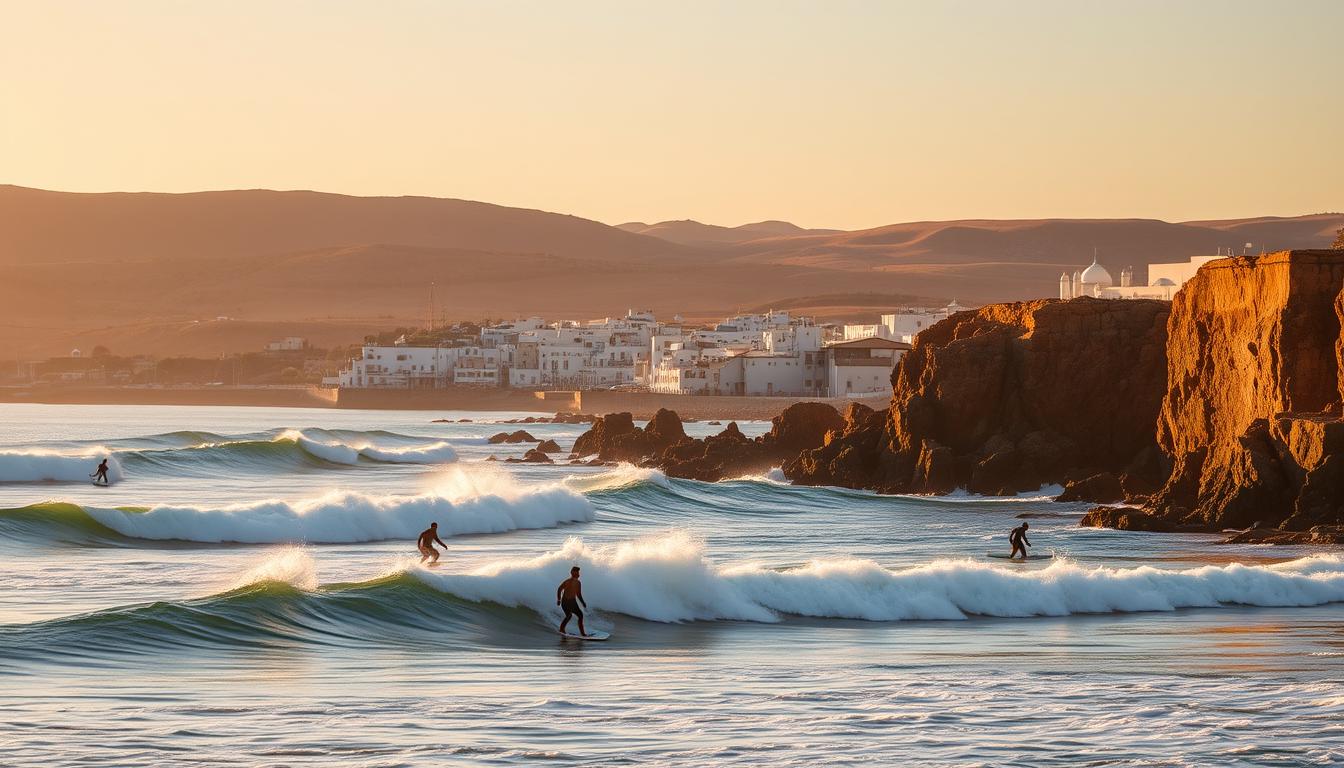
You can experience the thrill of riding the waves in a paradise-like setting. To make the most of your surf trip, understanding the optimal surfing conditions is crucial. The ideal time for surfing depends on several factors, including the season, swell direction, and wind patterns.
Key Takeaways
- Morocco’s surf season peaks during certain months.
- The optimal surfing conditions vary depending on the region.
- Understanding the swell direction and wind patterns is crucial.
- You can book surf lessons and plan your trip accordingly.
- Contact us via WhatsApp (+212663231312) or email (contact@surfinginTaghazout.com) to plan your surf adventure.
Morocco’s Surfing Scene: An Overview
With its unique geography, Morocco’s surf scene is thriving, offering consistent waves year-round. The country’s Atlantic coastline is exposed to swells from the North Atlantic, creating a variety of waves suitable for surfers of all levels.
Why Morocco Has Become a Global Surf Destination
Morocco has become a hotspot for surfers globally due to its consistent waves and favorable wind patterns. The region around Taghazout and Agadir is particularly popular, with numerous surf camps and schools offering lessons and rentals.
The Atlantic Coastline: Morocco’s Wave Factory
The Atlantic coastline of Morocco is known for its diverse range of surf spots, including world-famous point breaks and secluded beach breaks. Some of the most notable surf spots include:
- Taghazout’s Anchor Point
- Agadir’s Devil’s Rock
- Essaouira’s Sidi Kaouki
Famous Point Breaks and Beach Breaks
Morocco is home to some of the most iconic point breaks and beach breaks in the world. These include:
- Anchor Point in Taghazout, known for its consistent waves
- Devil’s Rock in Agadir, a challenging point break for experienced surfers
- Sidi Kaouki, a secluded beach break near Essaouira
Wave Consistency Throughout the Year
One of the key factors that make Morocco an ideal surf destination is the consistency of its waves throughout the year. The surfing weather in Morocco is characterized by gentle offshore winds and a consistent swell direction, making it suitable for surfers of all levels.
Understanding Morocco’s Surf Seasons
Morocco’s surf seasons are a complex interplay of North Atlantic swells and local wind patterns. Understanding these factors is crucial to determining the top surfing seasons in Morocco and experiencing prime surf conditions in Morocco.
The Year-Round Surf Calendar
The surf calendar in Morocco varies significantly throughout the year, with different seasons offering unique wave conditions. Seasonal swell patterns play a significant role in shaping these conditions.
Seasonal Swell Patterns
During the winter months, Morocco experiences larger swells due to North Atlantic storms, resulting in bigger waves, especially on the Atlantic coast.
Temperature Variations
Temperature variations between seasons also affect surf conditions. Warmer waters during summer months make for comfortable surfing, while colder waters in winter require wetsuits.
How Climate and Geography Shape Wave Conditions
Morocco’s geography, with its extensive Atlantic coastline, exposes it to various wave conditions influenced by North Atlantic swells and local wind patterns.
North Atlantic Influence
The North Atlantic has a significant impact on Morocco’s surf, particularly during the winter when swells are larger and more consistent.
Local Wind Patterns
Local wind patterns also play a crucial role, with offshore winds creating clean and organized wave faces, ideal for surfing.
| Season | Swell Size | Water Temperature |
|---|---|---|
| Winter | Large | Cold |
| Summer | Small to Medium | Warm |
As noted by surf experts, “Morocco’s surf seasons offer a diverse range of conditions for surfers of all levels.” Understanding these conditions can enhance your surfing experience.
The Best Time to Surf in Morocco: Season by Season
The best time to surf in Morocco depends on your skill level and preferences, as the country’s coastline offers diverse wave conditions throughout the year. Morocco’s extensive Atlantic coastline is exposed to swells from the North Atlantic, creating a varied surfing experience across different seasons.
Fall (September-November): The Beginning of Swell Season
Fall marks the beginning of the swell season in Morocco, with consistent waves that are ideal for surfers looking to escape the summer crowds. During this period, the wave heights start to increase, providing exciting opportunities for both beginners and experienced surfers.
Wave Heights and Consistency
The fall season brings a noticeable increase in wave heights, with average wave heights ranging from 3 to 6 feet. The consistency of the waves is also higher during this time, making it an excellent period for surfers to improve their skills.
Crowd Levels and Water Temperature
As the summer vacation season ends, the crowds dissipate, making it a more relaxed time to surf. The water temperature remains relatively warm, ranging from 64°F to 68°F (18°C to 20°C), allowing for comfortable surfing conditions without the need for thick wetsuits.
Winter (December-February): Peak Season for Experienced Surfers
Winter is considered the peak season for experienced surfers in Morocco, as the North Atlantic swells reach their maximum strength. This period is characterized by powerful waves, often exceeding 8 feet in height.
Handling Powerful North Atlantic Swells
The North Atlantic swells that hit Morocco’s coastline during winter are among the most powerful in the world. Experienced surfers can take advantage of these massive waves, but it’s crucial to be aware of the potential dangers and to surf within your limits.
Weather Considerations and Wetsuit Requirements
Winter months bring colder water temperatures, ranging from 58°F to 62°F (14°C to 17°C), necessitating the use of thicker wetsuits. Additionally, surfers should be prepared for cooler air temperatures and potential storms.
Spring (March-May): Consistent Waves and Milder Conditions
Spring in Morocco offers a balance between wave quality and weather comfort. The waves remain consistent, and the air and water temperatures become milder, making it an ideal time for intermediate surfers.
Ideal Conditions for Intermediate Surfers
The spring season provides a great opportunity for intermediate surfers to improve their skills, with waves that are consistent and manageable. The conditions are generally less crowded than in the summer, adding to the appeal.
Balancing Wave Quality and Weather Comfort
As spring progresses, the weather becomes more pleasant, with warmer air temperatures and calmer seas. This balance between wave quality and comfort makes spring an attractive time for surfers who want to enjoy their sport without the harsh conditions of winter.
Summer (June-August): Beginner-Friendly Waves
Summer is the best time for beginners to learn surfing in Morocco. The waves are generally smaller and more manageable, making it an ideal period for those new to the sport.
Smaller Swells and Learning Opportunities
The summer months bring smaller swells, which are perfect for learning the basics of surfing. The calm and clear waters provide a safe environment for beginners to practice and improve their skills.
Dealing with Summer Crowds
While summer is great for beginners, it’s also the peak tourist season, which means that popular surf spots can get crowded. Planning your surfing sessions early in the morning or later in the evening can help you avoid the crowds.
Regional Guide: When to Surf Where in Morocco
Morocco’s diverse coastline offers a range of surf spots, each with its unique characteristics and best surf times. Understanding the regional variations can help you plan your surf trip to Morocco more effectively.
Taghazout and Agadir Region
The Taghazout and Agadir region is renowned for its consistent waves, making it a favorite among surfers. Within this region, specific breaks offer different experiences.
Anchor Point, Hash Point, and Panoramas
Anchor Point is known for its powerful waves, while Hash Point offers a more sheltered experience. Panoramas, with its stunning views, provides a variety of wave types depending on the swell direction.
Best Months for Each Break
The best months for surfing in Taghazout range from September to April, with peak conditions typically occurring during the winter months. Anchor Point and Hash Point are particularly popular during this time due to their consistent waves.
Essaouira and Sidi Kaouki
Essaouira and Sidi Kaouki are celebrated for their windsurfing opportunities, but they also offer great surf conditions. The wind patterns in this region create a unique surfing experience.
Wind Patterns and Wave Consistency
The wind in Essaouira can be quite strong, making it ideal for windsurfers. However, the waves remain consistent, providing good surf conditions, especially during the summer months.
Seasonal Highlights
Summer is the best time to surf in Essaouira, with warm weather and consistent waves.
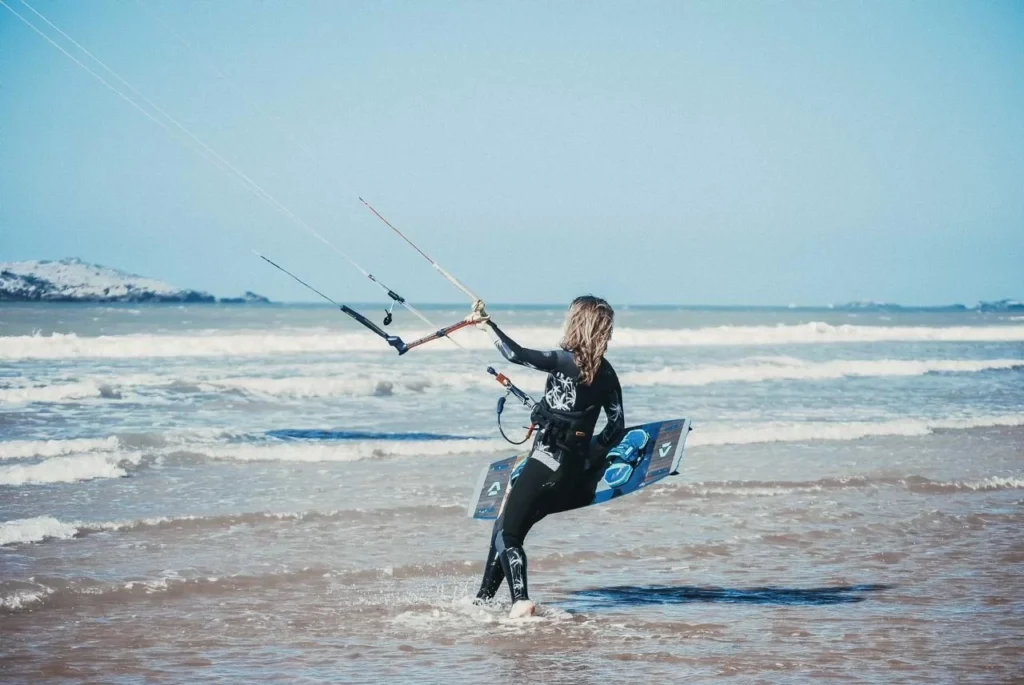
Imsouane Bay and Cathedral Point
Imsouane Bay is famous for its long rides, making it a must-visit for surfers looking to experience Morocco’s best waves.
Morocco’s Longest Rides
Imsouane Bay offers some of Morocco’s longest surfable waves, particularly during the winter months when swells are at their largest.
Optimal Swell Direction and Size
The optimal swell direction for Imsouane is northwest, and the best wave sizes are typically found during the peak winter season.
Northern Coast Spots: Mehdia to Ceuta
The northern coast of Morocco offers less crowded surf spots, providing an alternative for those looking to avoid the more popular areas.
Less Crowded Alternatives
Mehdia and other northern coast spots are ideal for surfers seeking fewer crowds and a more serene surfing experience.
Seasonal Accessibility
The accessibility of these northern spots can vary with the seasons, with some being more suitable during the spring and fall when the swells are milder.
Surf Lessons in Taghazout: Learning from the Pros
Taghazout offers some of the best surf lessons globally, suitable for both beginners and seasoned surfers. Whether you’re looking to catch your first wave or refine your technique, the surf schools in Taghazout have got you covered.
Beginner to Advanced Instruction Options
Surf lessons in Taghazout cater to all skill levels, from those who have never set foot in the water to advanced surfers looking to improve their skills. You can choose between single lessons and week-long packages, depending on your schedule and commitment level.
Single Lessons vs. Week-Long Packages
- Single Lessons: Ideal for those on a tight schedule or looking to try out surfing before committing to a longer course.
- Week-Long Packages: Perfect for those serious about improving their skills. These packages offer a comprehensive learning experience.
Group and Private Instruction
You can opt for group instruction, where you’ll learn alongside other surfers, or private lessons, which offer personalized feedback and instruction.
What to Expect from Surf Lessons
When you sign up for surf lessons, you can expect a structured program that covers the basics of surfing, safety, and technique.
Typical Daily Schedule
A typical day might start with a morning session on the beach, covering theory and preparation, followed by practical sessions in the water.
Equipment and Safety Training
You’ll be provided with all the necessary equipment, and part of the lesson will include safety training to ensure you’re aware of how to surf safely.
Best Time of Year for Surf Lessons
The best time for surf lessons depends on your skill level and what you’re looking for. Generally, the summer months offer warmer waters and smaller waves, ideal for beginners.
Seasonal Recommendations for Different Skill Levels
- Beginners: Summer (June to August) is the best time to start, with warm water and gentle waves.
- Advanced Surfers: Winter (December to February) offers bigger waves and a more challenging surf.
Booking Through SurfinginTaghazout.com
For a seamless booking experience, visit SurfinginTaghazout.com to secure your spot in the surf lessons.
Weather Patterns and Swell Conditions
To catch the perfect wave in Morocco, it’s essential to grasp the country’s weather patterns and swell conditions. Morocco’s coastline along the Atlantic Ocean creates a unique environment where various weather patterns and swell directions come into play.
Understanding Moroccan Swell Directions
Morocco is exposed to different swell directions, which significantly impact the surf conditions. Understanding these directions is crucial for surfers to identify the best spots and times to surf.
North vs. West Swells
North swells typically bring larger waves to the northern coast of Morocco, while west swells affect the entire coastline, creating consistent waves throughout the country. The direction of the swell plays a significant role in determining the surf conditions at different breaks.
How Different Breaks Respond to Swell
Different surf spots in Morocco respond uniquely to various swell directions. For instance, Imsouane Bay is known for its massive waves during north swells, while Taghazout is more consistent with west swells.

Wind Patterns Throughout the Year
Wind patterns in Morocco vary throughout the year, significantly affecting surf conditions. Understanding these patterns helps surfers plan their sessions.
Morning Offshores and Afternoon Onshores
In Morocco, winds are typically offshore in the morning, creating clean and glassy conditions ideal for surfing. As the day progresses, winds often turn onshore, making the surf conditions choppy.
Seasonal Wind Variations
During the winter months, winds tend to be stronger and more northerly, while in the summer, they are generally lighter and more westerly. These seasonal variations impact the surf conditions and should be considered when planning a surf trip.
Reading Surf Forecasts for Morocco
To make the most of your surf trip to Morocco, it’s crucial to understand how to read surf forecasts. Key metrics include swell size, direction, and wind speed.
Key Metrics to Watch
When checking surf forecasts, pay attention to swell size, direction, and period, as well as wind speed and direction. These metrics will help you predict the surf conditions.
Reliable Forecast Resources
Some reliable resources for surf forecasts in Morocco include Surfline, Magicseaweed, and Windguru. These websites provide accurate and up-to-date information to help you plan your surf sessions.
| Forecast Resource | Key Metrics | Reliability |
|---|---|---|
| Surfline | Swell size, direction, wind | High |
| Magicseaweed | Swell size, direction, wind, weather | High |
| Windguru | Wind speed, direction, weather models | High |
By understanding Morocco’s weather patterns, swell conditions, and how to read surf forecasts, you can maximize your surf experience in this beautiful country.
Beyond Surfing: Paradise Valley Day Trips
Escape the surf scene and explore the breathtaking Paradise Valley, a natural oasis in the heart of Morocco. This stunning destination offers a unique opportunity to experience the country’s diverse landscapes and activities beyond surfing.
Exploring Morocco’s Natural Oasis
Paradise Valley is a haven for those seeking adventure and relaxation. The valley boasts crystal-clear swimming holes and natural slides, perfect for a refreshing dip.
Swimming Holes and Natural Slides
The valley’s swimming holes are surrounded by lush vegetation, creating a serene atmosphere. You can slide down the natural rock formations and enjoy the cool waters.
Hiking Opportunities
In addition to swimming, Paradise Valley offers excellent hiking trails with breathtaking views of the surrounding landscape. You can explore the valley’s natural beauty at your own pace.
Best Time to Visit Paradise Valley
The ideal time to visit Paradise Valley depends on the seasonal water levels. Generally, the valley is at its best during the spring and early summer months when the water is calm and clear.
Seasonal Water Levels
The water levels in Paradise Valley vary throughout the year, with the highest levels typically occurring during the winter months. However, this can also make the valley more challenging to access.
Combining with Your Surf Schedule
You can easily combine a day trip to Paradise Valley with your surf schedule. The valley is located near Taghazout, making it an ideal excursion for surfers looking to take a break.
What to Bring and Expect
When visiting Paradise Valley, be sure to bring comfortable hiking shoes, a swimsuit, and plenty of water. You can expect a warm welcome and a chance to experience the natural beauty of Morocco.
Practical Preparation Tips
To make the most of your trip, consider booking through SurfinginTaghazout.com, which offers guided tours and expert knowledge of the area.
Booking Through SurfinginTaghazout.com
By booking through SurfinginTaghazout.com, you can ensure a smooth and enjoyable experience. They provide comprehensive guidance on what to expect and how to prepare for your day trip.
Sunset Sandboarding Adventures in Timlaline
Timlaline’s majestic dunes offer a unique sandboarding adventure, set against the backdrop of a breathtaking Moroccan sunset. As you glide down the sandy slopes, the thrill of sandboarding combines with the serene beauty of the desert landscape.
The Thrill of Desert Surfing
Sandboarding in Timlaline is an exhilarating experience that brings together the excitement of surfing and the tranquility of the desert. The activity allows you to explore the dunes in a fun and adventurous way.
Comparing Ocean and Sand Surfing
While ocean surfing involves riding waves on water, sandboarding is about gliding down sandy dunes. Both activities offer a unique thrill, but sandboarding provides a different kind of challenge and excitement.
Beginner-Friendly Activity
Sandboarding is suitable for all skill levels, including beginners. The gentle slopes of Timlaline’s dunes make it an ideal location for those new to the sport.
Optimal Seasons for Sandboarding
The best time for sandboarding in Timlaline depends on the temperature and weather conditions. Generally, the spring and autumn seasons offer the most favorable conditions.
Temperature Considerations
Mild temperatures during spring (March to May) and autumn (September to November) make these seasons ideal for sandboarding. The heat of summer can be challenging, while winters can be quite cool.
Best Time of Day
The late afternoon and early evening are the best times for sandboarding, as the sun begins to set, casting a golden glow over the dunes.
Combining Surf and Sand Experiences
For those looking for a multi-adventure experience, combining surf and sand activities is a great option. You can book a day trip that includes both surfing and sandboarding.
Multi-Sport Day Trips
Day trips that combine surfing and sandboarding offer a varied and exciting experience. You can enjoy the best of both worlds in one adventure.
Booking Your Sandboarding Adventure
To book your sandboarding adventure in Timlaline, visit SurfinginTaghazout.com. They offer guided tours and equipment rental.
Planning Your Moroccan Surf Trip: Practical Tips
Morocco’s diverse surf regions require thoughtful preparation to ensure a smooth and enjoyable trip. Whether you’re a seasoned surfer or just starting out, understanding the practical aspects of your journey can make all the difference.
Accommodation Options for Surfers
When it comes to accommodation, surfers have a range of options to choose from, including surf camps and independent stays. Surf camps offer a comprehensive experience, often including lessons, equipment rental, and social activities.
Surf Camps vs. Independent Stays
Surf camps are ideal for those looking for a hassle-free experience, with many options available in areas like Taghazout and Agadir. Independent stays, on the other hand, offer more flexibility and can be a good choice for those on a budget or looking for a more local experience.
Budget to Luxury Options
From budget-friendly accommodations to luxury resorts, Morocco caters to all preferences. You can choose to stay in a simple riad or opt for a high-end hotel with amenities tailored to surfers.
Transportation and Logistics
Getting to and around Morocco’s surf regions requires some planning. Understanding your transportation options can help ensure a stress-free trip.
Getting to Morocco’s Surf Regions
The nearest international airport is in Agadir, which serves as a gateway to many of Morocco’s surf spots. From there, you can arrange for transfers or rent a car to get to your destination.
Local Transportation Between Breaks
Local transportation options include taxis, buses, and shuttle services provided by some surf camps. Planning ahead can help you navigate between surf spots efficiently.
What to Pack for Different Seasons
Packing the right gear is crucial for a successful surf trip. The season you visit will dictate what you need to bring.
Wetsuit Requirements by Month
| Month | Wetsuit Thickness |
|---|---|
| December to February | 4/3mm |
| March to May | 3/2mm |
| June to August | 2mm or rash guard |
Essential Gear and Extras
Beyond your wetsuit, don’t forget essentials like sunscreen, a surf leash, and a rash guard. Consider packing layers for cooler evenings, especially in the winter months.
Booking Your Adventure via WhatsApp or Email
To make booking your surf trip as straightforward as possible, consider reaching out directly via WhatsApp or email. Many surf camps and tour operators offer package deals and custom itineraries.
Package Options and Custom Itineraries
Whether you’re looking for a basic surf package or a fully customized experience, operators can tailor their offerings to your needs. Be sure to inquire about what’s included.
Contact Information and Response Times
For the most efficient booking process, have your travel dates and preferences ready. Response times can vary, so plan ahead to ensure you secure your spot.
Ready to book your Moroccan surf adventure? Reach out via WhatsApp (+212663231312) or email (contact@surfinginTaghazout.com) to start planning your trip.
Conclusion: Catching the Perfect Wave in Morocco
Now that you’ve explored Morocco’s surfing scene, understood its surf seasons, and discovered the best times to surf in different regions, you’re ready to plan your trip. Morocco offers a world-class surfing experience, with consistent waves and varied surf spots. The best time to surf in Morocco depends on your skill level and preferences, whether you’re a beginner or an experienced surfer.
The top surfing seasons in Morocco are from September to November and March to May, offering a balance of consistent waves and mild conditions. If you’re looking for peak season, winter months from December to February are ideal for experienced surfers. For beginners, summer months from June to August provide smaller waves and warmer waters.
By understanding the best time to surf in Morocco and planning your trip accordingly, you can catch the perfect wave and make the most of your surfing adventure. With its rich surf culture, varied landscapes, and welcoming communities, Morocco is a must-visit destination for any surf enthusiast.
FAQ
What is the best time to surf in Morocco?
The best time to surf in Morocco depends on the season and your skill level. Generally, fall (September-November) and spring (March-May) offer consistent waves and mild conditions, while winter (December-February) is peak season for experienced surfers.
What are the top surfing seasons in Morocco?
Morocco has a year-round surf calendar, with different seasons offering unique conditions. Fall brings consistent swells, winter is ideal for experienced surfers, spring offers milder conditions, and summer is beginner-friendly.
What are the prime surf conditions in Morocco?
Morocco’s prime surf conditions vary by season and region. The Atlantic coastline is exposed to different swell directions, and the wind patterns change throughout the year. Understanding these factors helps you plan your surf trip.
What are the optimal surfing months in Morocco?
The optimal surfing months in Morocco depend on your skill level and preferences. September to November and March to May are generally considered the best months for surfing, with consistent waves and mild conditions.
What are the best surf spots in Morocco?
Morocco has a diverse range of surf spots, including Taghazout, Agadir, Essaouira, Sidi Kaouki, Imsouane Bay, and the northern coast. Each region has its unique characteristics and best surf times.
What is the swell size for surfing in Morocco?
The swell size in Morocco varies by season and region. Winter months typically bring larger swells, while summer months have smaller swells. Understanding the swell size helps you plan your surf trip and choose the right equipment.
What are the best surf camps in Morocco?
Morocco has numerous surf camps, particularly in the Taghazout and Agadir region. These camps offer lessons, rentals, and accommodations for surfers of all levels. You can book through SurfinginTaghazout.com.
What is the surfing weather in Morocco like?
Morocco’s surfing weather varies by season, with mild temperatures in spring and fall, and cooler temperatures in winter. Summer months can be warm, but the water temperature remains relatively cool. Understanding the weather patterns helps you plan your surf trip.
